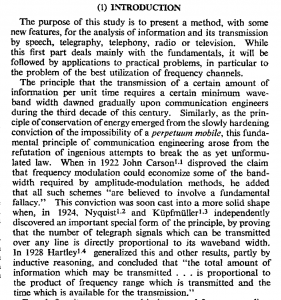This is a revision of “Speak up and write,” which I published here yesterday. I did not replace that essay with this one, because I wanted to show what a revision might look like. If writing is thinking, then revision is thinking even more deeply. The words on the page give you a moment, overnight in this case, to evaluate what you said yesterday. This morning I woke up aware of what I meant to say yesterday –even though I did not quite know it yesterday!. I had become conscious of the connection between the three ideas of yesterday’s essay: Mount Everest, NASA, and of amateurs weighing in (speaking, writing, and acting) on topics of public importance. I took out my introduction (just a bridge, a comment, and not especially on point), I got rid of the tangential and probably distracting commentary on capitalism, I saw the obvious contradiction between my thoughts on the first two topics and my thoughts on the third, and I tried to figure out why it’s not a contradiction. My new draft is based on those realizations.
Writing is a form of thinking, and today I want to think about the pros and cons of expertise.
Expertise is an obvious necessity in many tasks, ancient and modern, artisanal and technical. It’s one reason that a college education, even in the United States, has become so focused and even vocationally oriented–and thus less exploratory, less experimental, less humanities-focused, and less “able to help students figure out their place in the universe and their moral obligations to fellow humans” (see Molly Worthen’s “The Anti-College is on the Rise” in today’s New York Times, 9 June 2019, for more on that). But our valuation of expertise sometimes lets us compartmentalize our participation in life too much.
First, the need for expertise. Many people were horrified recently to discover that there were crowded lines on the safety ropes to summit Mount Everest. In The Guardian’s “In Focus” podcast, “Death, carnage and chaos: a climber on his recent ascent of Everest,” (3 Jun 2019), a climber describes how people at that altitude can’t think straight, how they are each barely able to survive on the oxygen they carry, and how sick and injured climbers cannot expect to be saved by the others. They are all stuck on the same safety line, but everyone is at the end of his rope. This has always been true on Everest, of course, but now inexperienced climbers expect that their money can get them to the top. The others, in this life-or-death situation, do not always help them. Yes, there’s co-dependencies even in the best troupe of climbers, but every person must be an expert on key issues relevant to climbing mountains at high altitudes.
Now (well, as early as just next year, 2020) NASA is thinking of charging 58 million dollars (plus $35,000/day) for a trip to the International Space Station (Los Angeles Times, 7 June 2019). But I can’t help thinking of Everest. If something goes wrong–if people have to survive by their wits and what they know of space, science, and technology (think The Martian), or if there’s just a simple shortage of oxygen (think Everest 2019)–then will the “guest” astronauts survive? Even the experts with the greatest human gift of compassion will have to calculate that the survivors need to be able to, well, survive. Keeping the guests alive for another day will not solve the longer-term problem of getting the oxygen production back working, getting the ship’s communications up, getting the ship home to earth, or whatever else needs to get done. In short, sending amateurs to space is a lousy idea. Space survival requires expertise.
But life at sea level is possible for amateurs, and amateurs need to weigh in on the public debates we’re having on big issues such as economic inequality, the power of algorithms, and the climate crisis. Engineering and scientists are sometimes reticent to speak up, however, when the topic is not their area of expertise. I’ve asked ECE graduate students to read about the climate crisis, for example, and then I’ve asked them to opine. They generally won’t. They think it’s out of their area. They say they can’t evaluate all the evidence because they haven’t read it all. They say it’s a different methodology than they are familiar with. And yet, if anyone outside an Earth and Space Science Department can understand, evaluate, and appreciate the data, it’s another scientist or engineer. Also, recognizing what “scientific consensus” means might help, and there are many political, economic, and policy issues that must be discussed and then advocated for or against.
Becoming a specialist does not mean that you must voice no opinions on other topics. You are a citizen, a brainy one who asks important questions and knows how to go about answering many of them. Please, then, share your thoughts with the rest of us. Climbing Mount Everest and going to space may be the dreams of your childhood, but if you don’t have the expertise, then skip them. On the other hand, whether you understand the details or not, you can still use your voice and actions to advocate for the type of society in which you’d like to live.















